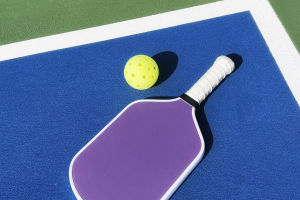Tennis, a globally celebrated sport, combines physical fitness, mental strategy, and precision. Its origins trace back to 12th-century France, but today, it’s played on diverse courts worldwide, from grass to hard surfaces.
Whether you’re a passionate player or an enthusiastic fan, there’s no denying the excitement that comes with a game full of powerful serves, rapid volleys, and breathtaking rallies.
The Basic Rules and Format
A tennis match starts with one player serving the ball diagonally into the opposite service box. Players alternate hitting the ball over the net, aiming to outmaneuver their opponent. Points are scored when a player fails to return the ball, hits it out of bounds, or commits a fault. The game scoring system might seem unusual at first—moving from 15, 30, 40, and finally to "game point"—but it adds a strategic layer to the sport.
Matches can be played as singles (one-on-one) or doubles (two-on-two). Winning requires skill and stamina, as players must win a set of games to claim a match. Most matches are best of three or five sets, making endurance crucial. Serving speed, spin, and placement, combined with quick reflexes and strategic shot selection, are vital to a player’s success.
Types of Tennis Courts
Tennis can be played on four main court types, each affecting gameplay differently:
Clay Courts: Slow down the ball, making matches last longer. Players with patience and strong baseline play excel on clay, like Rafael Nadal.
Grass Courts: Known for fast, low bounces. Matches on grass favor serve-and-volley players and are often shorter, with quicker points.
Hard Courts: Provide a balanced game, with medium speed and consistent bounces. Many major tournaments, like the US Open, are played on this surface.
Synthetic Courts: These vary widely but generally mimic other types, offering a unique playing experience.
The Appeal of Tennis
Tennis is more than a physical sport; it’s a mental game. Strategy plays a pivotal role, with players often studying opponents to anticipate moves. A tennis player must know when to use aggressive shots or when to rely on defensive tactics. It's a sport where one good point can change the game's momentum, making matches thrilling to watch and play.
Health Benefits of Playing Tennis
Playing tennis regularly provides numerous physical and mental benefits. It enhances cardiovascular health, builds strength and flexibility, and improves hand-eye coordination. The mental focus required to strategize and stay ahead during a game also boosts cognitive function and reduces stress. Tennis is an all-around workout, and for many, it becomes a lifelong passion that keeps them active and engaged.
Whether you're picking up a racket for fun or striving to compete at a professional level, tennis offers something for everyone. It’s a dynamic, exhilarating sport that keeps players and fans on the edge of their seats. So, Lykkers, grab a racket, find a court, and experience the excitement and benefits of tennis firsthand!


